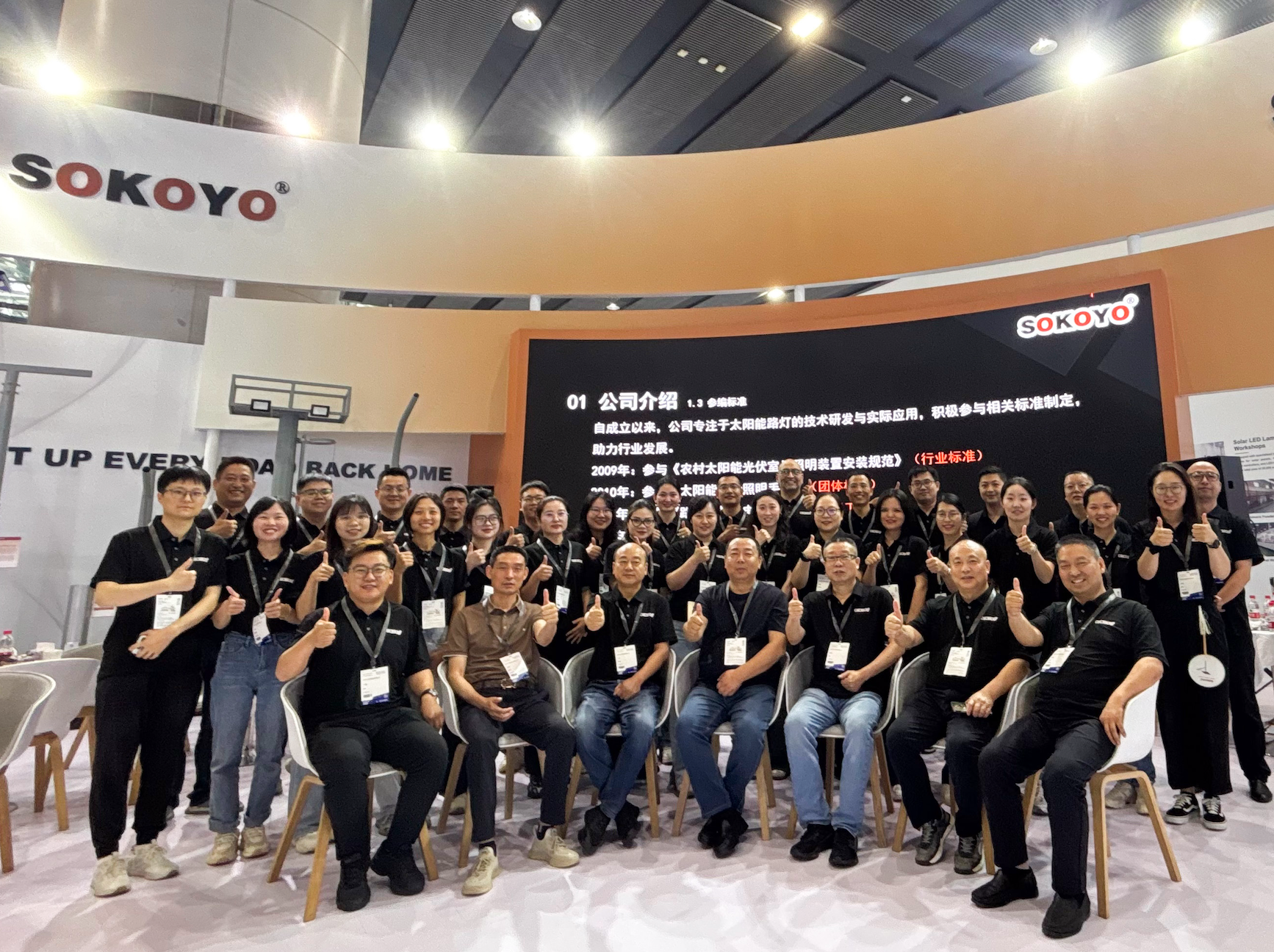1. What is a Motion Sensor?
The sensor we’re using now is a Microwave Sensor, also called a Motion Sensor. Within the range of induction, if any object moves(Human being or any moving objects), it will give the signal to the controller, then the controller will turn on the light with the preset output power. If there’s no induction, without the signal to the controller, the controller will have the LED working with preset output(This output power is usually not high, because there’s no need to have high power to lighten the road when no one passes). In this case, during the night the street light will work with lower power at the time of low pedestrian flow which can not only save energy but also enlarge the output power to lighten the road when people pass. From another perspective, it extends the working time of the LED, as well as saves the budget and cost of the owner.
Picture 1: The Microwave Sensor in all in one solar street light DEXTER

Picture 2: Smart Power Regulation Schematic Diagram
2. How to connect solar street light?
Connecting a solar street light typically involves several components, including solar panels, a charge controller, a battery, LED lights, and wiring. Here's a step-by-step guide on how to connect a solar street light:
Tools and materials you may need:
Solar panels
Solar charge controller
Battery
LED street lights
Mounting hardware for solar panels and lights
Electrical wiring and connectors
Pole or mounting structure
Wire strippers and crimping tools
Screws and anchors (if necessary)
A ladder or scaffolding (for installation)
Step 1: Install the Solar Panels
Choose a suitable location for the solar panels where they will receive maximum sunlight throughout the day. This is typically on top of a pole or another elevated structure.
Mount the solar panels securely using the appropriate mounting hardware. Ensure they are angled to capture the most sunlight.
Connect the solar panels in parallel or series, depending on your system's voltage requirements. Use appropriate wiring and connectors to link them together.
Step 2: Connect the Solar Panels to the Charge Controller
Run wiring from the solar panels to the charge controller. Ensure that the wires are appropriately sized to handle the current and voltage generated by the panels.
Connect the positive (+) wire from the solar panels to the positive terminal on the charge controller and the negative (-) wire to the negative terminal.
Step 3: Install the Battery
Place the battery in a secure and ventilated location, preferably in a weatherproof battery box.
Connect the battery to the charge controller. Attach the positive lead from the battery to the positive terminal on the charge controller and the negative lead to the negative terminal.
Step 4: Connect the Charge Controller to the LED Street Lights
Run wiring from the charge controller to the LED street lights. Use appropriately sized wires.
Connect the positive (+) wire from the charge controller to the positive terminal of the LED lights and the negative (-) wire to the negative terminal.
Step 5: Test the System
Make sure all connections are secure and tight.
Turn on the charge controller and check if it's properly charging the battery.
Turn on the LED street lights to ensure they are working.
Step 6: Mount the Street Lights
Install the LED street lights onto the pole or mounting structure securely, ensuring they are positioned at the desired height and angle.
Step 7: Final Checks
Double-check all connections for tightness and proper polarity.
Ensure that all wires are properly protected and weatherproofed.
Monitor the system's performance over time and make any necessary adjustments.
It's important to note that the specific installation process may vary depending on the brand and model of the solar street light system you are using. Always refer to the manufacturer's installation instructions for the most accurate guidance. Additionally, if you are not experienced in electrical work, it is advisable to seek the assistance of
a qualified electrician or solar installer to ensure a safe and reliable installation.
The key advantage of selecting an integrated solar street light is that installation involves simply mounting the light onto the pole, without the need for separate connections to solar panels and batteries.
